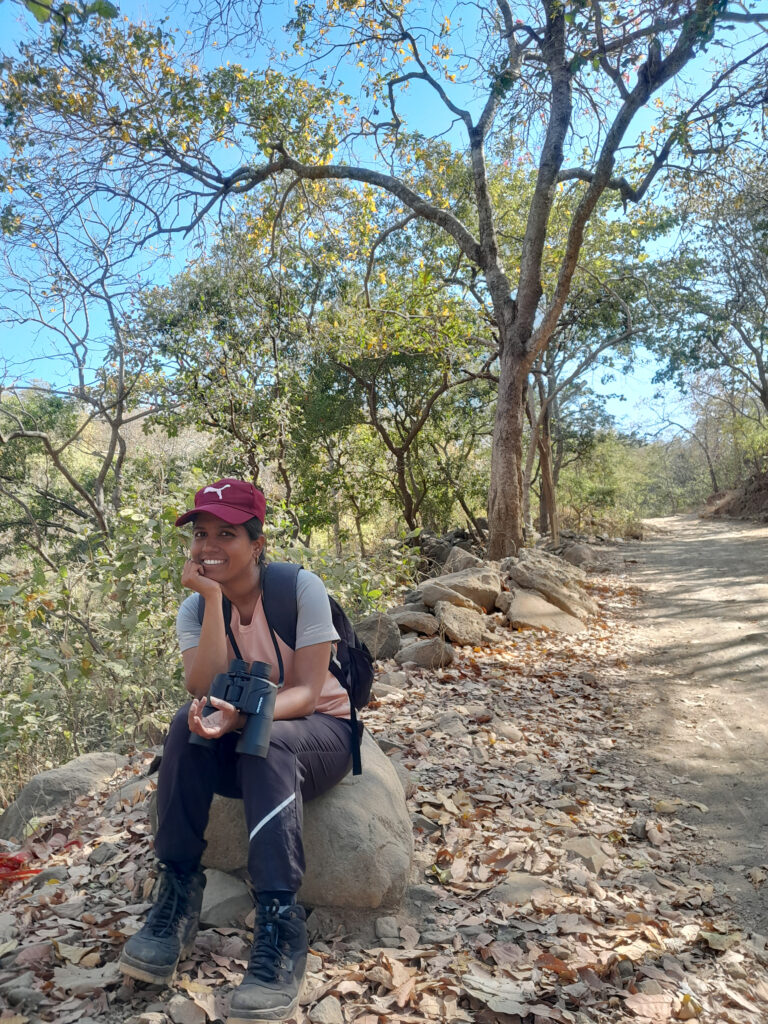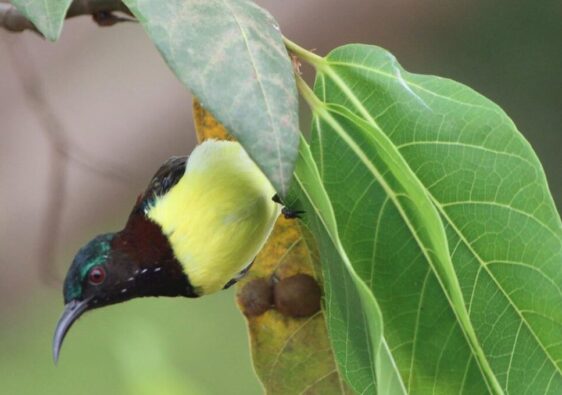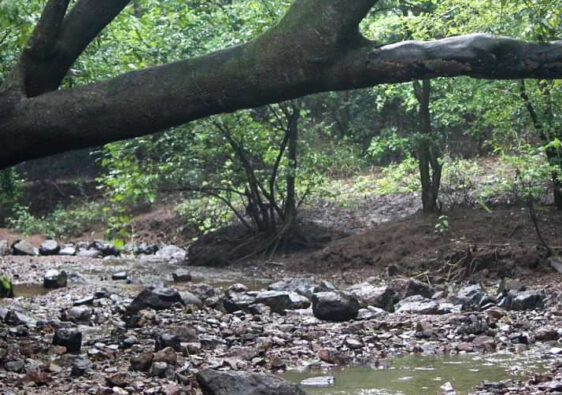I have loved reading about birds. Whenever I come across an article on birds in the natural history books or magazines, I get delighted. Birds have fascinated me from childhood. I always observed the sparrows making a nest in the wall crevices of our neighbor’s house. I still do. The sparrows are still here. Their generations have changed. They are more chirpy and noisy than their ancestors. But I still love them occupying a small space between us. The female sparrow sits near the nest while the male looks for building materials like grass, small twigs, sticks, strings, feathers.
My interest in bird-watching was further enriched when I started visiting Sanjay Gandhi National Park (SGNP). I learned to identify some common birds found in the park. Just to name a few like Oriental Magpie Robin, Greater Coucal (Bharadwaj), Common Tailorbird, Asian Koel, Coppersmith Barbet, Purple-rumped Sunbird, Red whiskered & Red Vented Bulbul, White Throated Kingfisher, Black Drongo. I was overjoyed whenever I was able to capture a bird in my camera. I used to come back home and hunt for their names in the books and read and understand more about them.
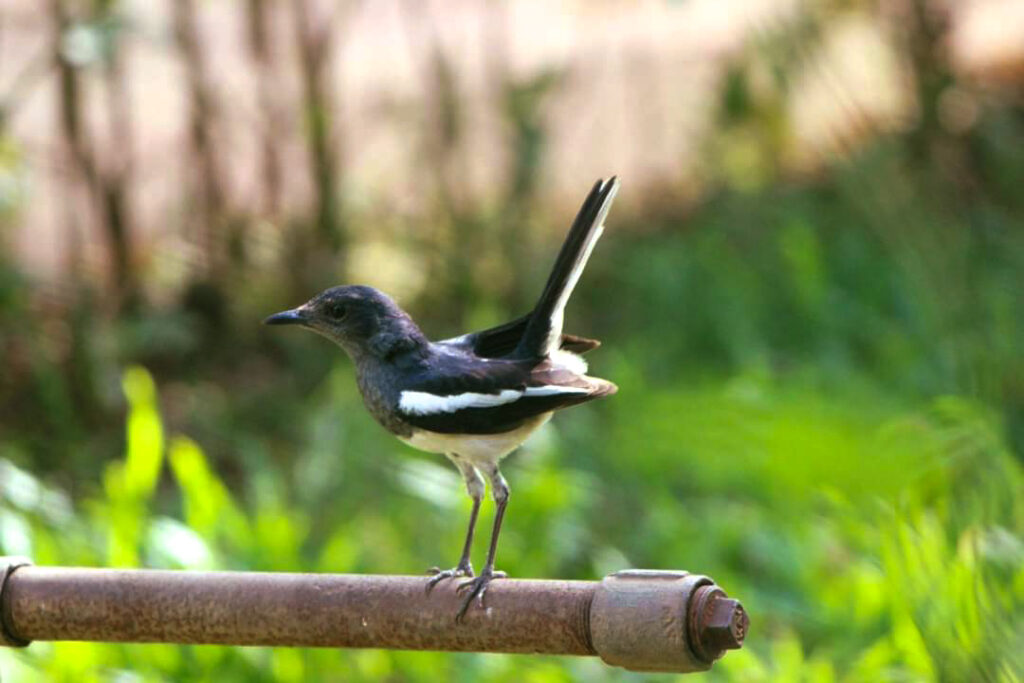
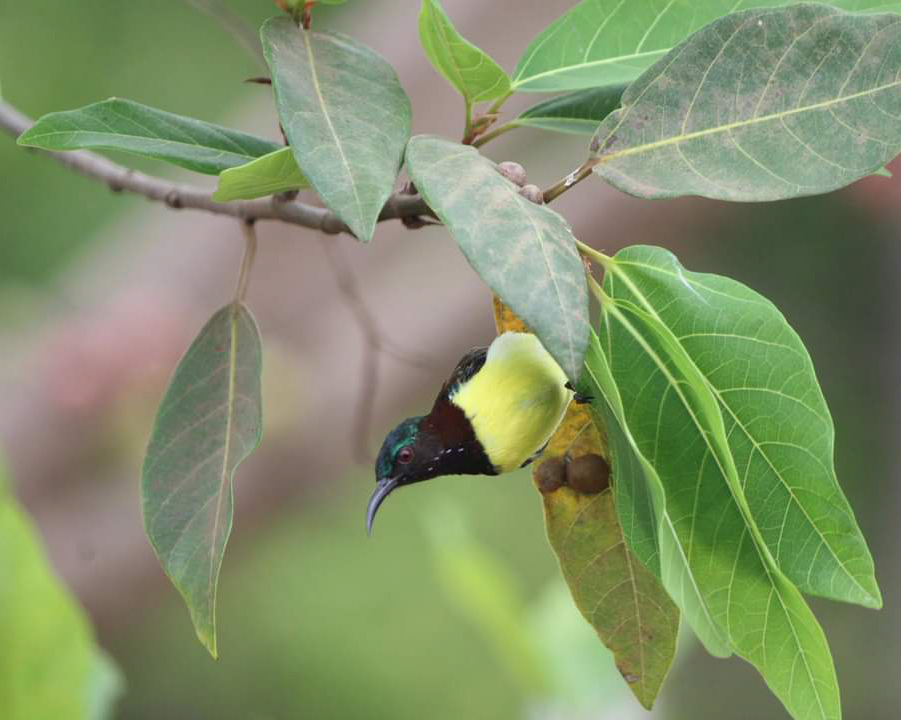
And this continues. Whenever I travel to a new place, my eyes always look for birdlife in the area. On my many visits to Ratnagiri & Raigad districts, I was able to identify more birds like Malabar Pied Hornbill, Green Bee Eater, Jungle Babbler, Indian Pitta, Spotted Dove, Munias, Malabar Whistling Thrush and many more. I am very grateful for my DSLR camera and birding books. They were my only companions with me in bird-watching.
Even Steffe is learning to identify some birds now. She has good observation skills and is able to locate a tiny bird in the dense bushes. Always passionate and curious to learn more about them, she insisted we invest in good binoculars. Though not a compulsion, it is always good to have one. I would prefer binoculars over a camera. The camera becomes a distraction for me. I may miss observing a bird in pursuit of a perfect photograph.
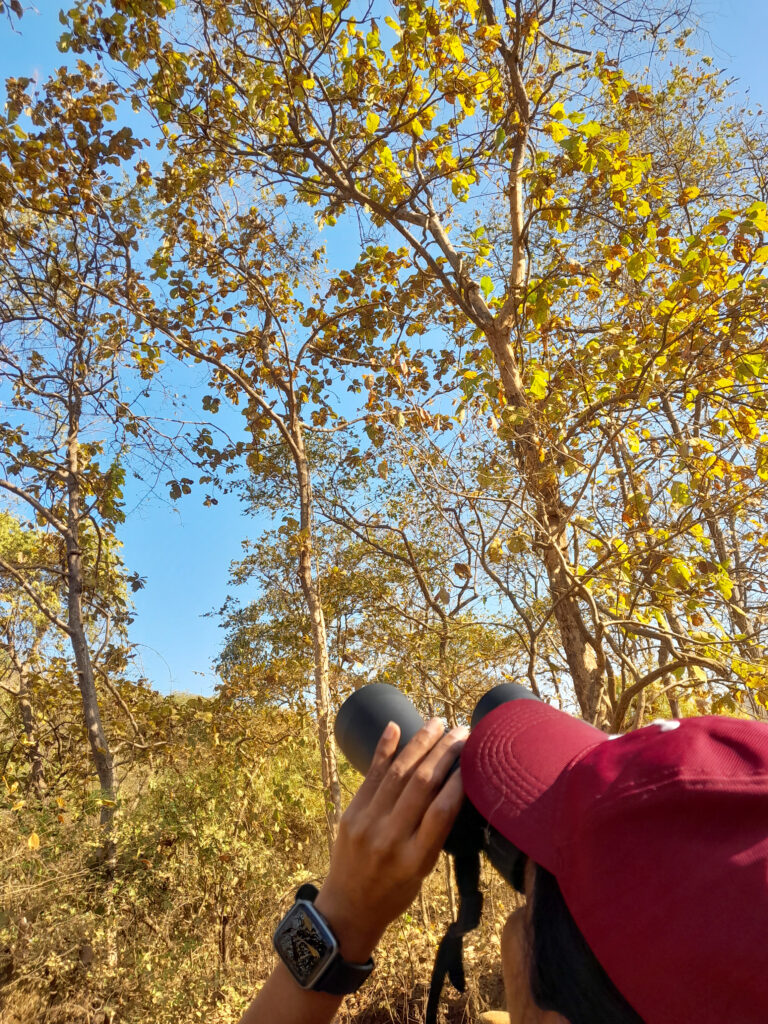
Last weekend we got an opportunity to go birding in the forest. I got a notification on Instagram that SGNP is conducting a bird-watching trail in the Tungareshwar Wildlife Sanctuary. We cancelled our trekking plan and immediately registered for this. It is always good to go on a nature walk with like minded people and field experts. And this was our first experience to be a part of a birding team.
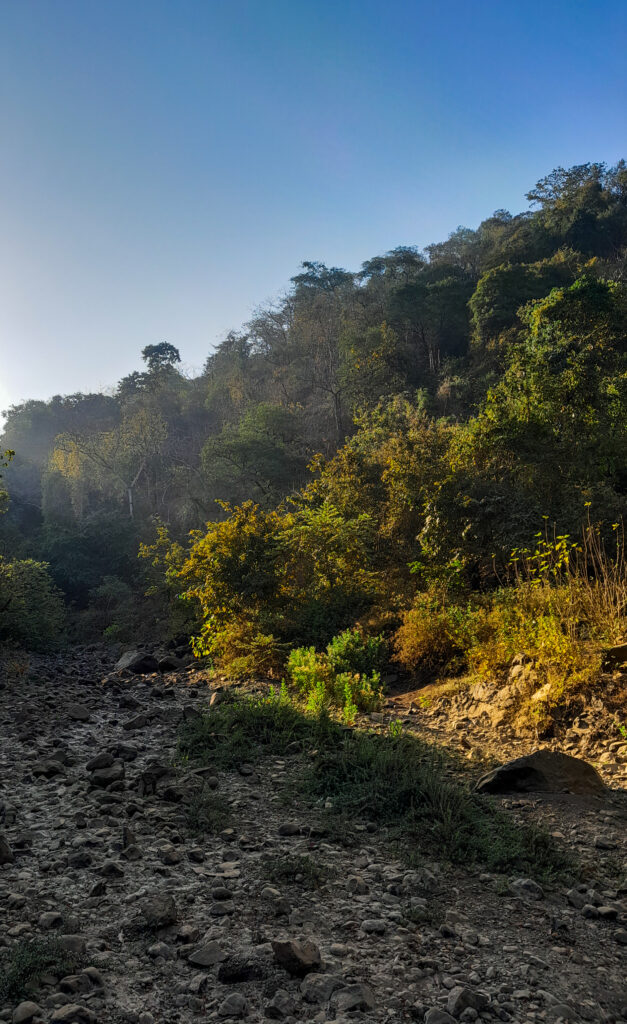
Tungareshwar Wildlife Sanctuary is politically located in the SGNP forest’s of the Yeoor range (Thane Division). Spread over 85 sq.km, it forms a corridor between SGNP and Tansa Wildlife Sanctuary. The forest is a mix of deciduous and evergreen dominated by teak trees. A dusty and unpaved path gradually ascends Tungareshwar which has an altitude of 2177 feet from the base.
All the participants were to meet at the entry gate at 6:45 am. Good to see everyone on time. We were a small flock of nine bird lovers. As Vaibhav, our trail guide and bird expert, introduces himself and explains the do’s and don’ts to be followed on the trail; he excitedly points towards a tiny bird perched on the top of a small bark of a barren tree. He is thrilled as he introduces the bird as ‘Yellow Throated Sparrow’. He informs us that during his childhood days, Salim Ali, the great Birdman of India, had shot this sparrow like bird but as he grew up and was introduced to birding literature he took up ornithology as his profession and dedicated his life to protecting the birds. “What a great start to the trail!” someone exclaimed.
A thrushlike long tailed bird with a rich chestnut underpart and glossy black above was seen foraging on the forest’s edge. It was ‘White-Rupmed Shama’. A lady from our group was very excited to see this rare bird. She had never seen the bird on her many trips.
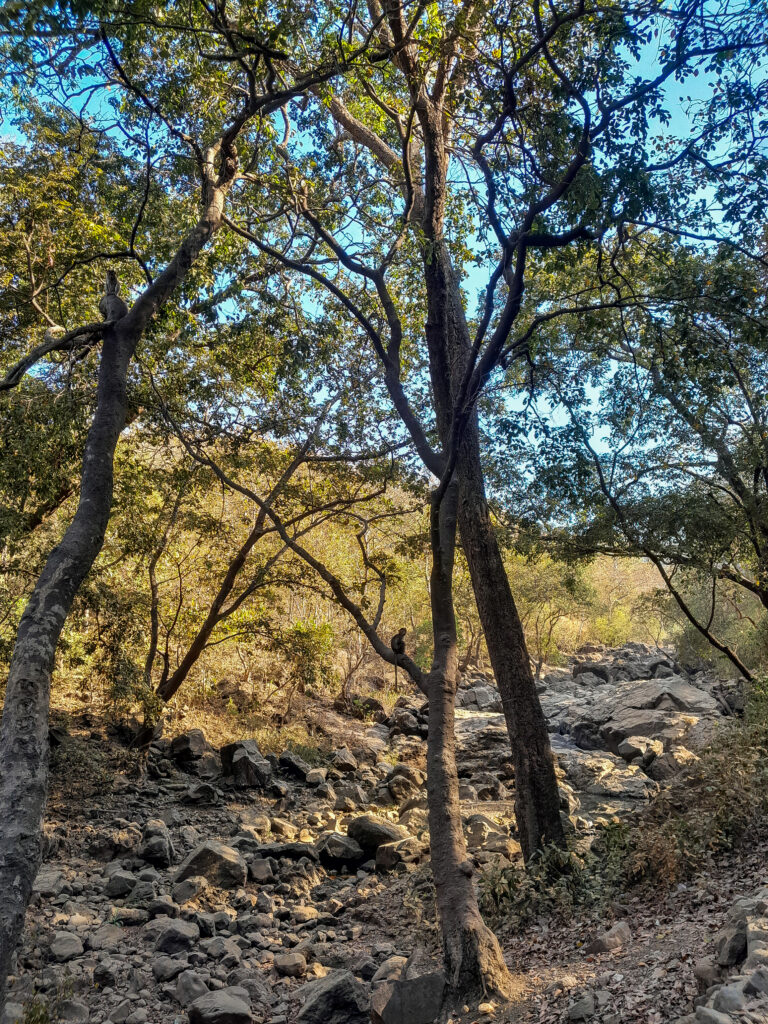
A part of the route is along a rocky stream-bed which was bone dry. But the same stream-bed becomes a raging torrent during the monsoon. On weekends, you can expect more activity of humans as devotees drive through the unpaved road towards the Mahadeo (Shiva) temple which is 3 km from the gate. Hence early morning (6:30 am to 9:30 am) is the best preferred time for bird watching in Tungareshwar with less disturbance.
Vaibhav identified many birds just by their calls. He was very quick to pick up a sound and tell the name of the species. Whenever he saw a bird, he would point his big gun-like camera towards it and would get very excited upon sighting a rare bird. One such bird which he was very eager to capture was the ‘Sulphur Bellied Warbler’ which was creeping sideways up a tree and shuffling among branches.
“Are there hornbills in Tungareshwar?” Their sighting is very rare, says Vaibhav, and he does not re-collect when he last saw it here. To see a hornbill, the majestic bird with a striking appearance is every bird lover’s wish. A man, who seemed to be a local, riding a motorcycle came in our direction, smiled and informed us about a waterhole nearby where we could spot some birds. He was passionate about birds and had fair knowledge about their habitat in the sanctuary. To reach the waterhole we had to cross a partly broken fence. Vaibhav led from the front. As soon as he reached, he was thrilled to see a bird fly away. “I just saw something,” Vaibhav said brightly. “Guess what?” We looked at each other puzzled. “It was ‘Indian Grey Hornbill’ sitting right in front. It flew away upon seeing me”.
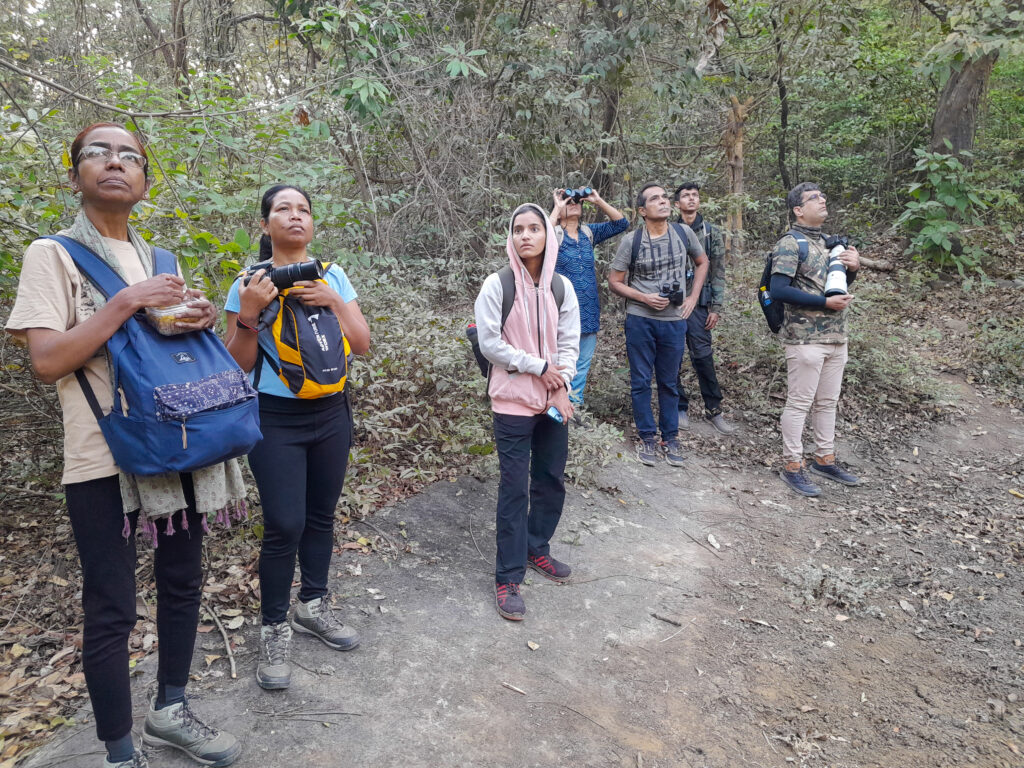
Hoping for the hornbill to return we waited for 15-20 minutes near the waterhole. During this time, we saw a ‘Marsh Harrier’ gliding above the dense forest. A sharp call of ‘Indian Shikhra’ was heard. Their calls are also mimicked by drongos to drive away other birds to aid them in their hunting and feeding activities. Vaibhav tells us an interesting observation of a drongo while on a bird survey in wetlands of Virar. A drongo was observed learning to mimic the sound of an ambulance which he used to distract and shoo away other birds.
The hornbill did not return and we continued our ascent.
The view of the treescapes along the trail are spectacular. The morning sun filtering through them and the mild breeze made for a good forest walk.
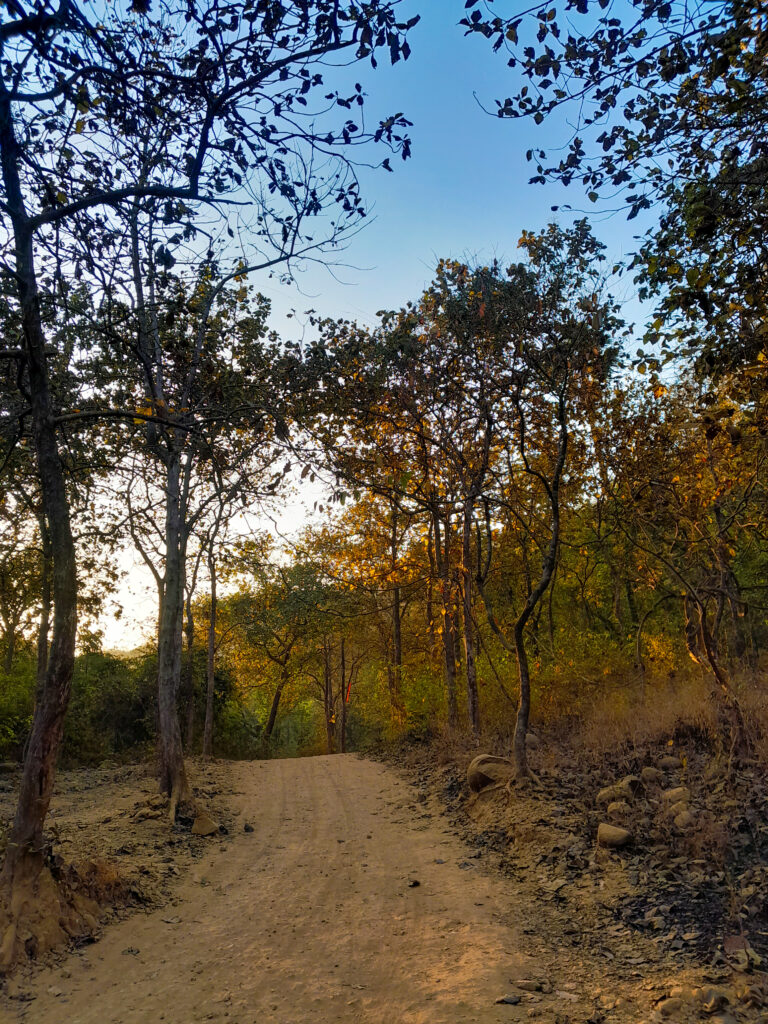
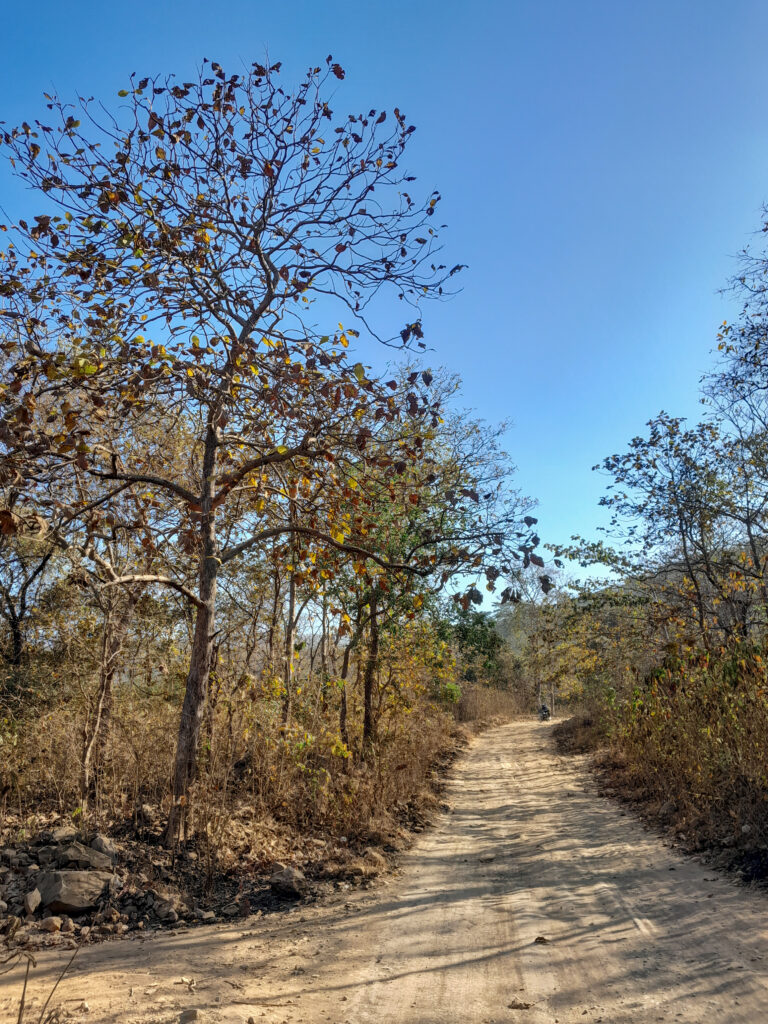
The ‘Coppersmith Barbet’ and ‘Brown-Headed Barbet’ tried adding some songs with their melodious monotonous call. Walking on the forest floor carpeted with dry leaves crunching beneath our feet, their constant call resembling ‘tuk… tuk… tuk…’ and ‘kut-roo…. kut-roo….kut-roo….’ was heard throughout the day. They are not so easy to sight and are often heard singing from the treetops, especially during the breeding season.
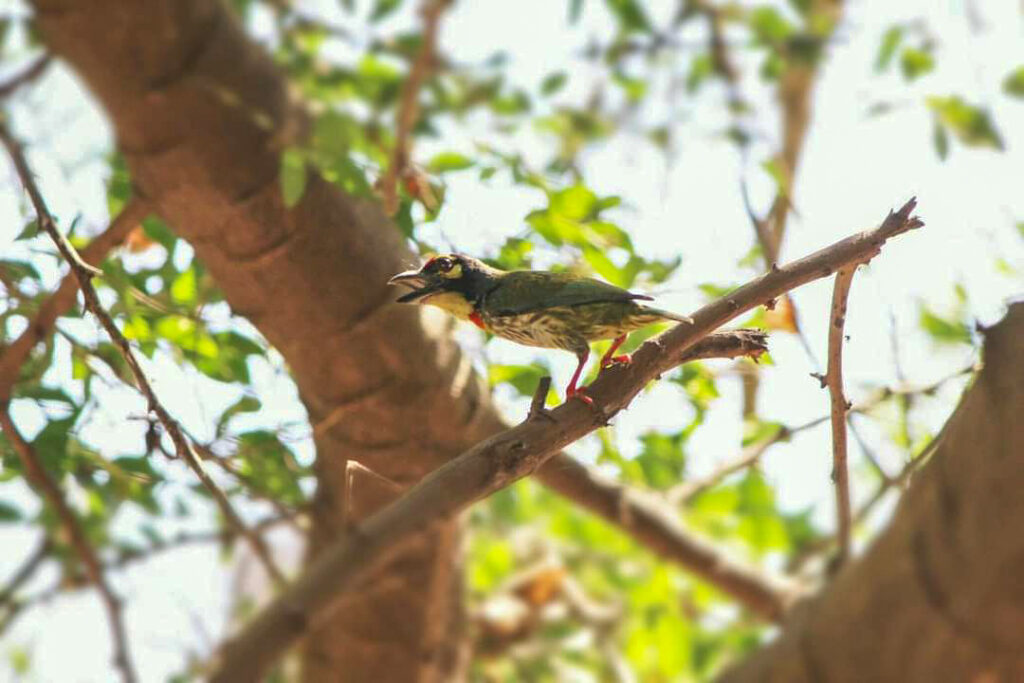
We took a diversion through the stream-bed towards the local deity temple which had a well alongside. The ruined well housed the Indian Bull Frog which is known for eating snakes. There were ample birding activities here. Selecting a spot in a shade near the well we observed the bird life. This is the benefit of going for birding with an experienced team. They know the best possible place to locate these feathered friends.
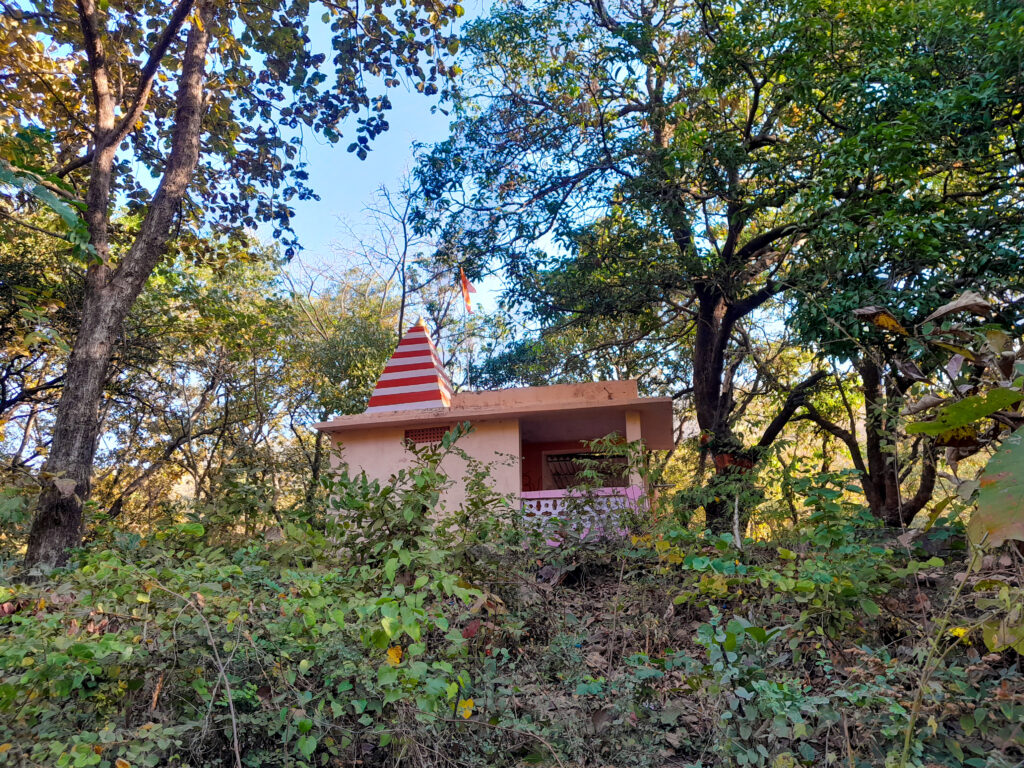
One of the participants mounted his camera on the tripod and began clicking continuous shots of ‘Vigor’s Sunbird’ – a small scarlet bird hovering over the wildflowers. We observed it through our binoculars. It was very beautiful. With a curved pointed beak, it was drawing nectar from the flower.
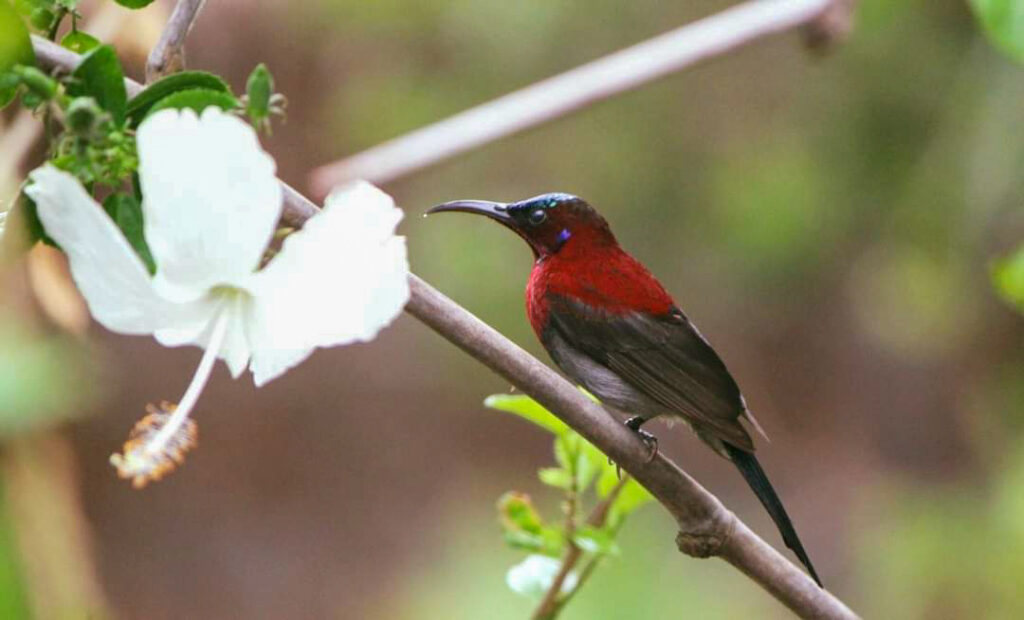
I noticed a movement on the canopy of a mango tree. A bird perched from one branch to another and its green colour camouflaged with the leaves. Upon observing closely, we found that there were three of them. And to everyone’s amazement Vaibhav congratulated us saying that we just found a very rare bird in this region- ‘Jordan’s Leafbird’. It had a dark blue throat and looked so bright in the sunshine. Blowing a whistling note all of them flew away in the dry open wooded stream where ‘Black Hooded Oriole’ rested on a big trunk of a crooked tree. The beautiful yellow bird had a bright pinkish bill and a red iris. Its head, neck and upper chest was glossy black which is an obvious distinction from ‘Indian Golden Oriole’.
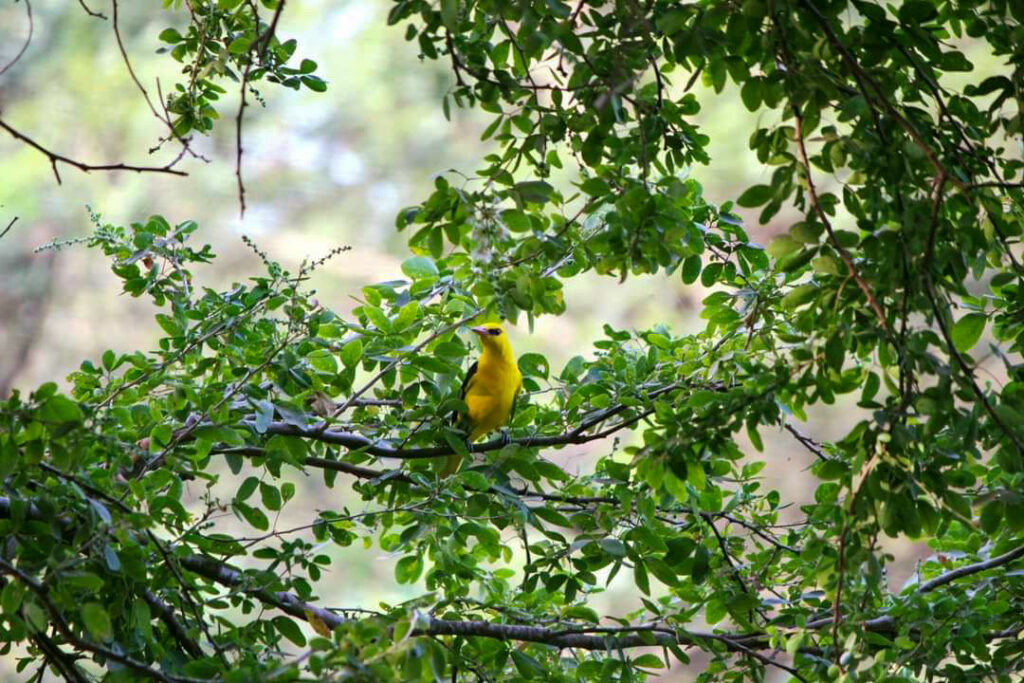
A ‘Greenish Warbler’ hopped on small bushes near the river-bed. Greenish & Green Warbler are two very similar looking species. The only best way to identify them is through their call and plumage. Other birds observed here were Common Iora, Tiger Flycatcher, Asian Brown Flycatcher and Orange Headed Thrush.
Further ahead in the dense forest we spotted the beautiful and glossy ‘Racket Tailed Drongo’, the great mimic ‘Ashy Drongo’, the rustic ‘Indian Paradise Flycatcher’ with its ribbon like tail and loud & raucous call and the blazing and colourful ‘Flameback Woodpecker’.
Within 3 km, more than 32 species of birds were observed by us. That made us happy!
This bird-watching trail was a very enriching experience. We learned many new things about birds and their behaviour. Birds play a vital role in biodiversity. They have a close relationship with nature as they play an important role by acting as pollinators, seed dispersers and predators, maintaining balance in the ecosystem.
The forest floor smelled of dry leaves. Crisp and refreshing. We sat on it and observed the birds. It was difficult to photograph them in the dense. Silence prevailed upon us. The only sound heard was of the crackling leaves and singing birds. We were in a harmonious relationship with nature for the short time we spent over here.
So next time you are out in a forest, park, garden or even your house backyard, take a step back from your busy lives and listen to the wisdom of the tiny philosophers of the sky. From the delicate sparrow to the soaring eagle, birds are among the most fascinating species on earth, and there is much to be learned from these messengers of peace and harmony.
